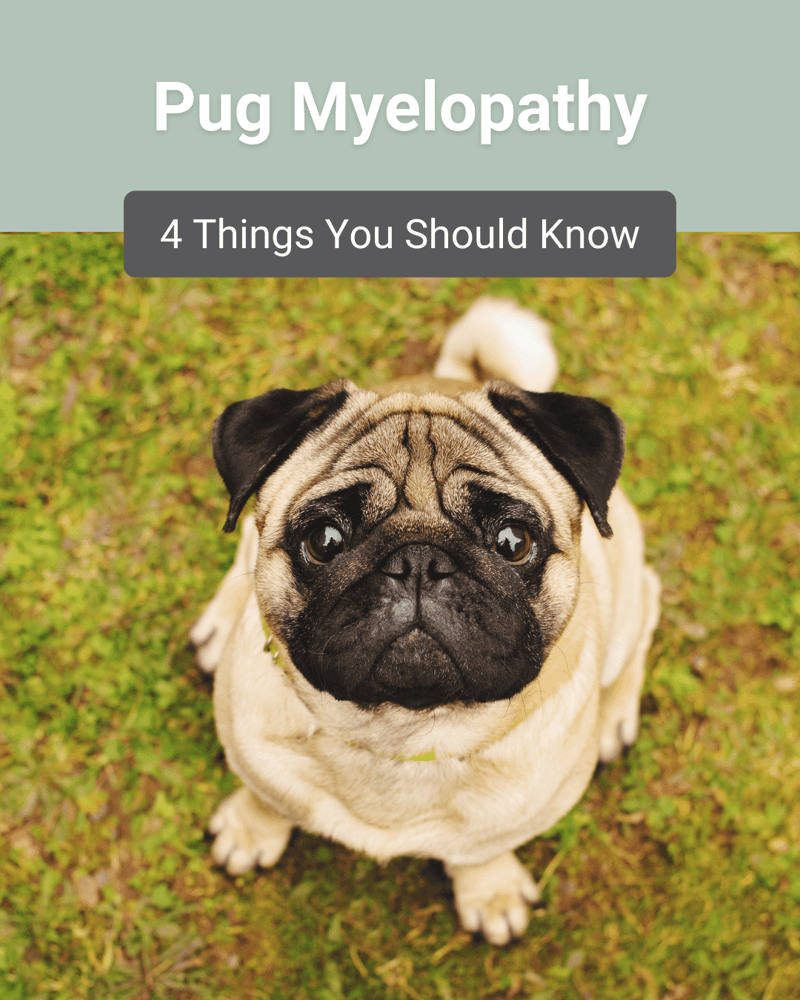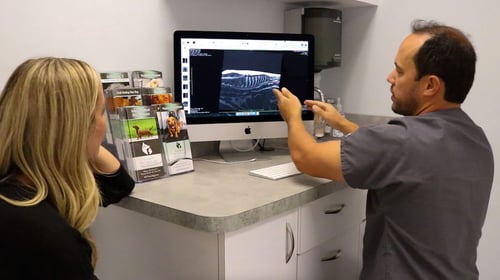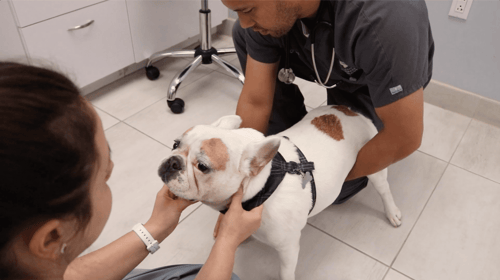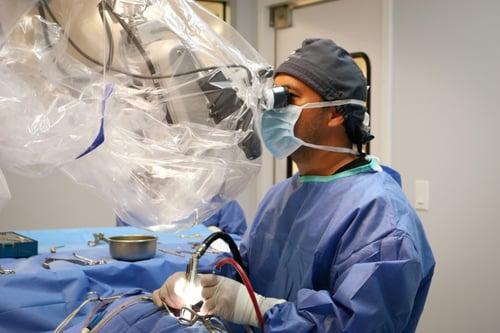4 Things You Should Know about Pug Myelopathy
Pug myelopathy is an uncommon condition in dogs that is still not fully understood. In fact, much remains open to debate, right down to its name. It is sometimes referred to as subarachnoid diverticulum, pug ataxia, and facet hypoplasia. At Southeast Veterinary Neurology, we prefer the term constrictive myelopathy.

What Exactly is Pug Myelopathy?
First, what is myelopathy? Myelopathy refers to any disorder of the spinal cord, such as intervertebral disc disease, tumors, inflammation, and degeneration.
Pug myelopathy, or constrictive myelopathy, occurs when a fluid-filled pocket develops on the outside of the spinal cord in the subarachnoid space and compresses the spinal cord.
Although it is completely normal (and good!) for the spinal cord to be surrounded by cerebrospinal fluid, this pocket becomes so dilated that it puts pressure on the spinal cord, causing symptoms.
What are Symptoms of Pug Myelopathy?
Messages travel back and forth between your dog’s brain and body via the spinal cord. Spinal cord compression prevents messages from traveling normally, resulting in neurological signs.
Typical symptoms of pug myelopathy, or constrictive myelopathy, include:
- Rear limb weakness and incoordination
- Normal front limbs
- Low tail carriage
- Urinary and/or fecal accidents
- Not painful
Unfortunately, these symptoms can develop so gradually and subtly, that they may not even really be noticed until an advanced stage is reached.
It is also worth noting that symptoms are localized to the rear legs when the fluid pocket is located in the middle of the back, which is usually the case. Rarely, however, the fluid pocket is located in the spinal cord of the neck, causing symptoms in all four legs.
What Causes Pug Myelopathy?
The dilated fluid pockets we see with this condition are associated with high motion areas of the spinal cord, but no one really knows why they occur.
Possible causes of pug myelopathy, or constrictive myelopathy, include congenital (present at birth) and developmental abnormalities or that they occur secondary to some other spinal problem such as instability, trauma, or inflammation. The answer is probably multifactorial.
Dr. Michael Wong, Veterinary Neurologist at Southeast Veterinary Neurology, shares, “Many times, these dogs actually have a malformation in the bones of their vertebral column that causes mild instability. This chronic irritation to the spinal cord causes scar tissue to form, constricting the spinal cord and leading to abnormal flow of cerebrospinal fluid. During surgery, I often find that the spider-like web in the subarachnoid space where the cerebrospinal fluid lives is thickened, as if from scar tissue.”

“In addition to the changes on the outside of the spinal cord, we also see abnormalities within the spinal cord on MRI,” adds Dr. Wong.
What Should You Know about Pug Myelopathy?
Since so little has been published about pug myelopathy, or constrictive myelopathy, here are four things you should know:
1. Pug Myelopathy is Not the Same as Degenerative Myelopathy
Degenerative myelopathy is a genetic, chronic degeneration of the spinal cord’s white matter that can have similar initial signs as pug myelopathy, or constrictive myelopathy, like progressive rear limb weakness that is not painful. However, without intervention, degenerative myelopathy would ultimately progress to complete paralysis of the body. MRI and genetic testing are required to differentiate between the two conditions.
2. Pug Myelopathy is the Most Common Cause of Mid-Back Spinal Cord Problems in Pugs
“Although little is published about this condition, in my experience, it is the most common mid-back spinal cord problem in pugs,” states Dr. Wong. “Common causes of rear limb weakness in pugs include things like slipped discs, tumors, and degenerative myelopathy, but the most common cause is pug myelopathy, or constrictive myelopathy.”
3. Pug Myelopathy is Not Limited to Pugs
The scar tissue that causes constriction leading to fluid pockets around the spinal cord is most commonly found in pugs. However, French bulldogs, English bulldogs, and Boston terriers are also overrepresented in constrictive myelopathy, or pug myelopathy.

4. There is No Standardized Treatment for Pug Myelopathy
Though diagnosis of pug myelopathy, or constrictive myelopathy, is becoming more frequent with advanced imaging techniques, no standardized treatment protocol has been identified. Medical management aims to reduce cerebrospinal fluid production and inflammation, while surgical management focuses on decompressing the spinal cord by removing the constriction.
Dr. Wong weighs in, “Surgery is typically my recommended treatment. The procedure is similar to surgery for intervertebral disc disease (IVDD), but involves removing the protective covering of the spinal cord (the dura mater) to release the fluid and break down the scar tissue. There is more risk, and it is more challenging.” He adds, “An important part of treatment for me is stabilizing the back bones to reduce the risk of recurrence.”

More recently, there have been several studies suggesting that surgery carries a better long-term prognosis, supporting the experience at Southeast Veterinary Neurology.
What Should You Do if Your Dog is Showing Signs of Pug Myelopathy?
If you suspect your dog has pug myelopathy, or constrictive myelopathy, make an appointment with a veterinary neurologist. Following the neurological exam, MRI is the safest and most complete way to evaluate for the condition. This will also rule out other possible spinal cord problems that may present in a similar way.
For more information about pug myelopathy, contact Southeast Veterinary Neurology. Our locations in Miami, Boynton Beach, Jupiter, and Virginia Beach are staffed around the clock with experienced and compassionate spinal cord specialists who will make sure your pets get the treatment they need and the care they deserve. Call one of our locations today!